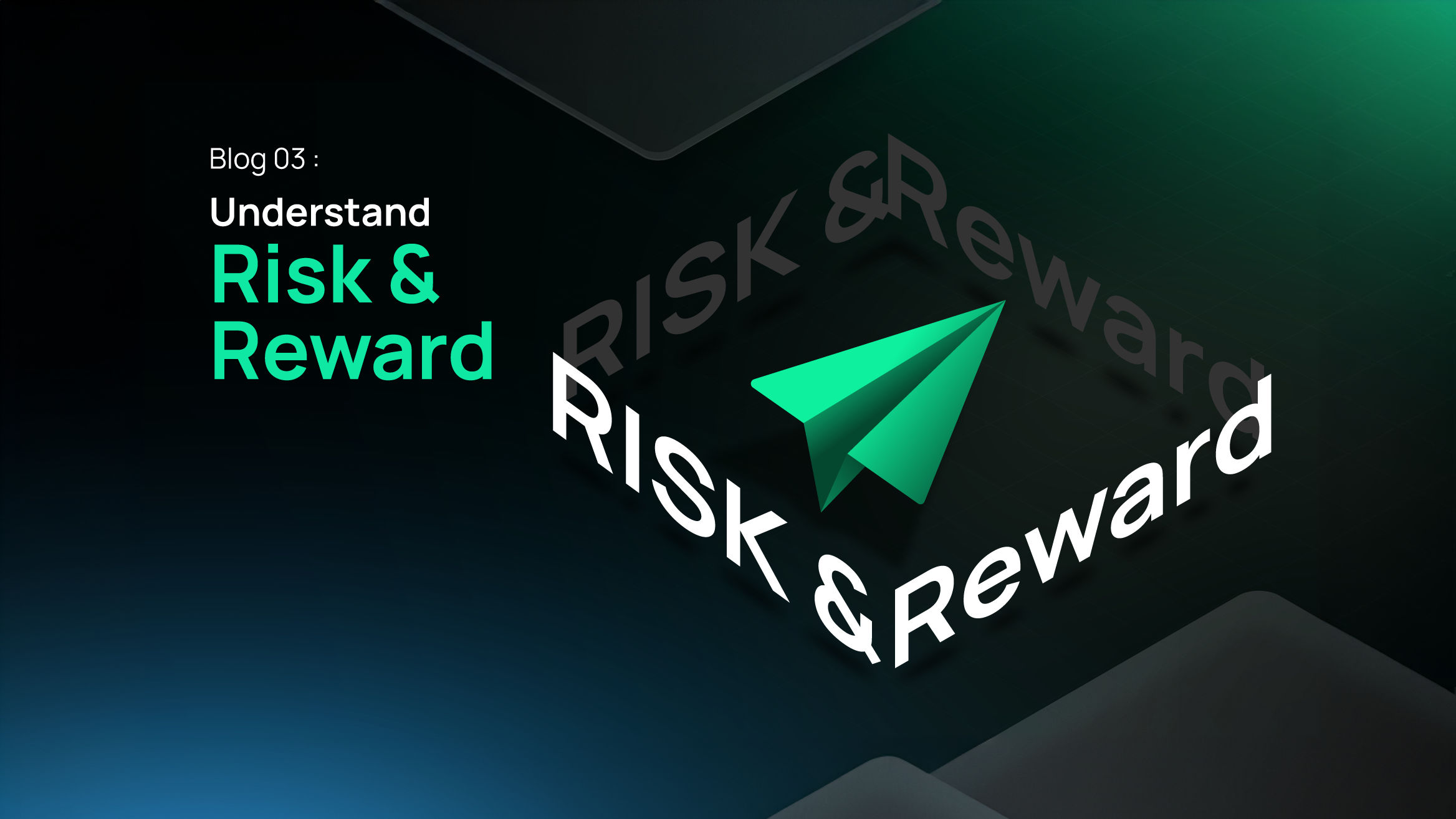
Understand Risk & Reward
Understand Risk & Reward
Investing is a journey towards achieving financial freedom, but it comes with risks. Understanding the link between risk and reward is key! This knowledge helps you make smart decisions and confidently move forward on your investment journey. So, hold the adventure, but do it wisely by balancing risk and reward for a successful investment journey.
| Key Takeaways |
Risk and reward are two sides of the investment coin. By carefully assessing your risk tolerance and choosing investments that match with it, you can make smart decisions that pave the way for a more secure financial future.
What are Risk and Reward?
> Risk refers to the possibility of losing some or all of the money you invest. Different types of investments have different levels of risk; typically, higher risk is associated with the potential for higher returns.
> Reward refers to the profit you may earn from an investment. Typically, higher rewards come with higher risk.
Types of Risks
1. Market Risk
This is the risk that the value of your investments will decrease due to economic factors affecting the entire market. Examples include economic recessions, rising interest rates, or currency exchange rate fluctuations.
2. Credit Risk
The risk that a company or government issuer bonds will be unable to repay its debt as agreed, resulting in the investor not receiving the principal back on time.
3. Interest Rate Risk
The risk that changes in interest rates will affect the value of fixed-income investments, such as bonds. Generally, when interest rates rise, the value of existing bonds falls.
4. Liquidity Risk
The risk of being unable to sell your investment at a fair price and get your money out when you need to. For example, this happens with investments in assets that are not frequently traded.
Managing Risk
Understanding and managing the balance between risk and reward is fundamental to successful investing. Here are some strategies to manage risks:
-
Diversification : Spread your investments across various financial instruments, industries, and geographies to reduce the overall risk of your investment portfolio.
-
Asset Allocation : Choose a mix of different types of investments (stocks, bonds, cash) based on your risk tolerance, investment horizon, and financial goals.
-
Regular Reviews : Regularly review your investment portfolio to ensure it aligns with your risk tolerance and make adjustments to asset allocation as needed.
Measuring Reward
> Capital Gains: The profit earned from selling an asset for more than its purchase price.
> Dividends: Regular payments made by a company to its shareholders from its profits.
> Interest: Payments received from bonds or savings accounts.
> Total Return: The overall return on an investment, including capital gains and income (dividends or interest).
The Risk-Reward Tradeoff
The relationship between risk and return refers to the trade-off between the potential reward and the potential loss associated with an investment. Generally, investments with higher potential rewards come with higher risks. Conversely, investments with lower risks typically offer lower potential rewards.
Examples of the Risk-Reward Tradeoff
1. Stocks: Higher potential returns but with higher volatility and risk.
2. Bonds: Lower risk compared to stocks, but with lower potential returns.
3. Mutual Funds and ETFs: Can offer a balanced risk-reward profile depending on the underlying assets.
4. Savings Accounts and CDs: Very low risk, but also very low returns.
Strategies for Managing Risk and Reward
-
-
Diversification: Spread investments across different asset classes (stocks, bonds, real estate, etc.) to reduce risk.
-
Asset Allocation: Dividing your investment money among different asset types based on your risk tolerance and investment goals.
-
Regular Review and Rebalancing: Periodically review your portfolio and adjust it to maintain your desired risk-reward balance.
-
Research and Analysis: Studying information and analyzing investments before making decisions to understand the expected risk and return.
-
Risk Assessment Tools: Using tools and criteria such as the Sharpe ratio, beta, and standard deviation to evaluate and compare the risk of different investments.
-
Conclusion
Investing is a powerful tool for building wealth and achieving your financial goals. However, it's important to understand the potential risks involved. By carefully assessing your risk tolerance and diversifying your portfolio, you can make smart investment decisions and move forward on your investment journey with more confidence. Remember, the key is to find a balance between the risk you are willing to take and the expected returns, which will help you successfully achieve your financial goals.


